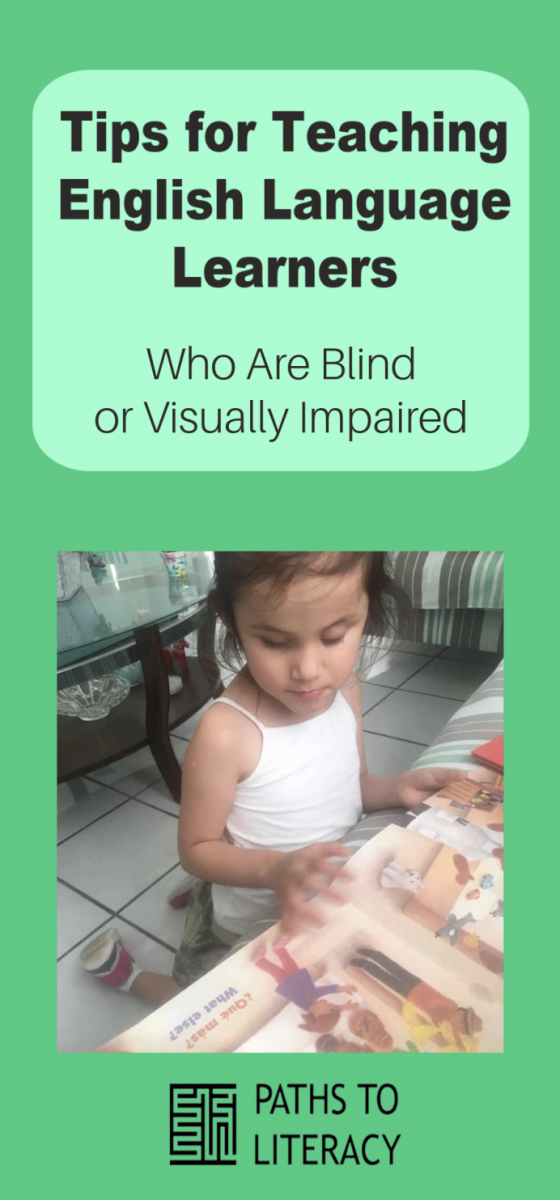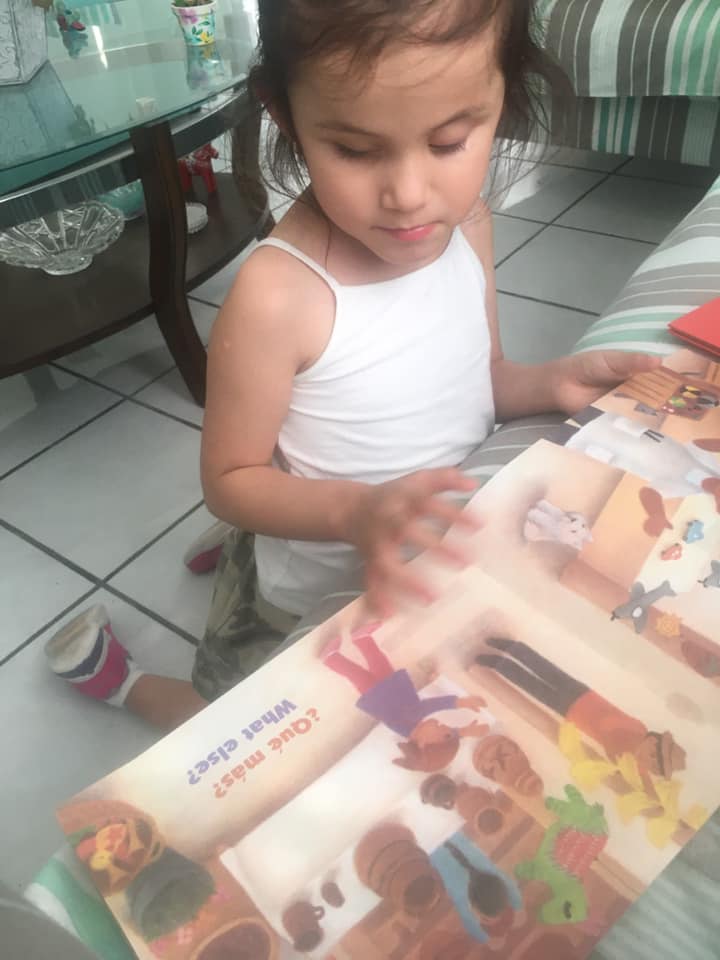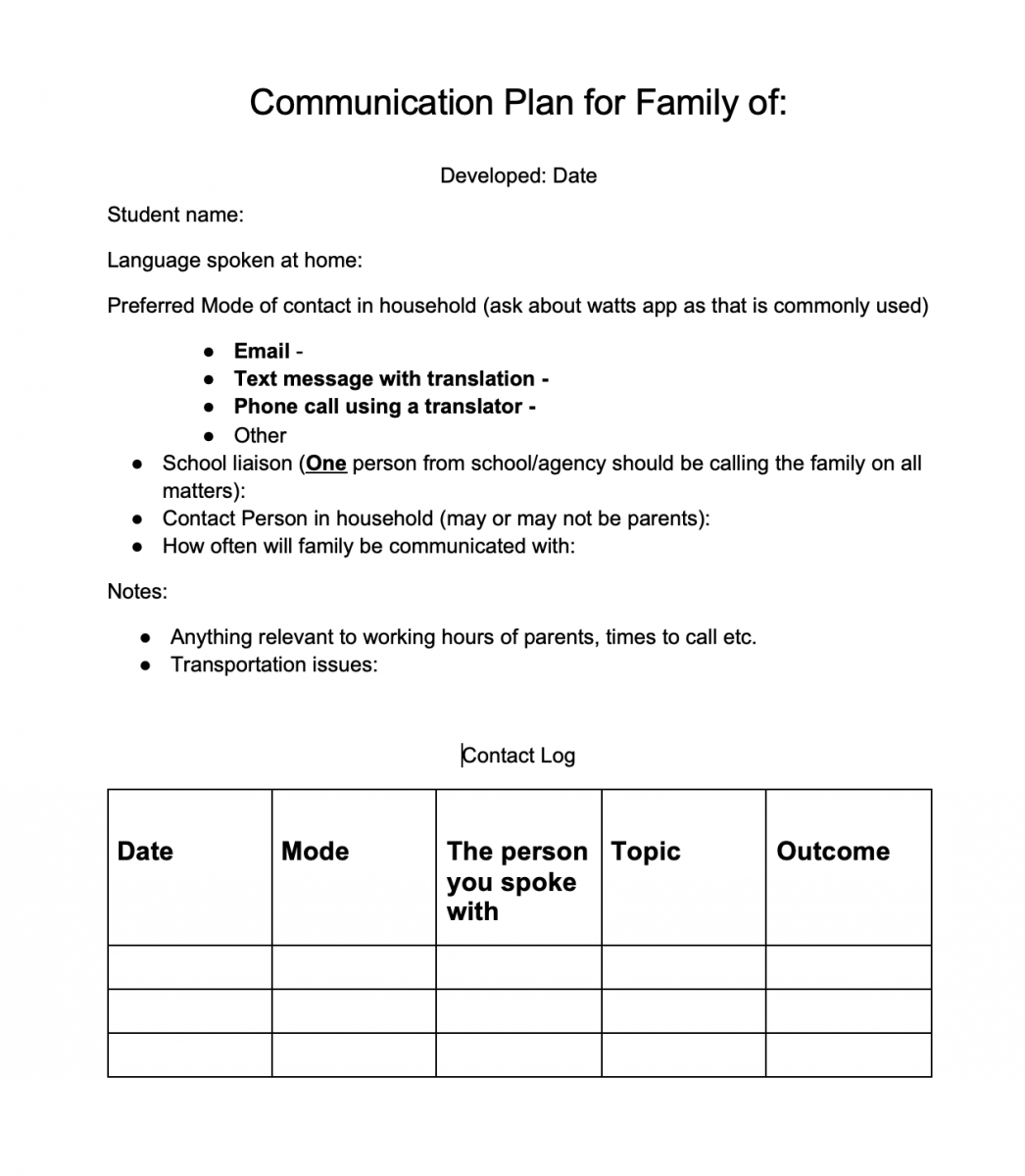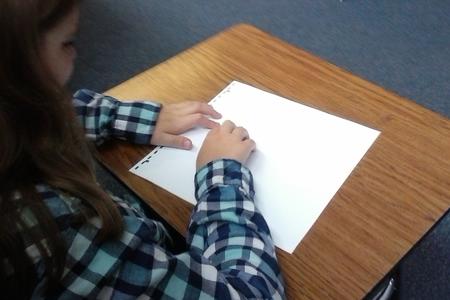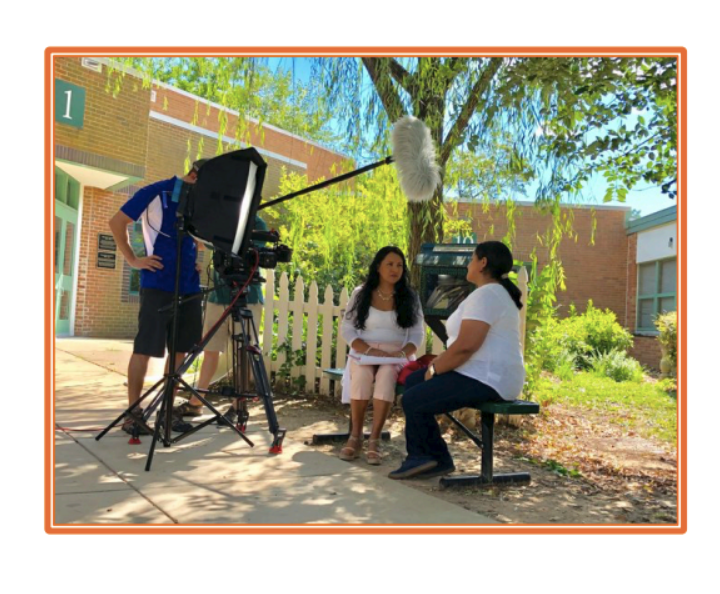Statistics on English Language Learners in the United States
- About 11% of our general education students are English Language Learners (ELL) or bilingual.
- TVIs generally do not feel competent in working with this population.
- Spanish was the home language of 3.7 million ELL students in fall 2015, representing 77.1% of all EL students and 7.6% of all public K-12 students. Arabic, Chinese, and Vietnamese were the next most common home languages spoken.
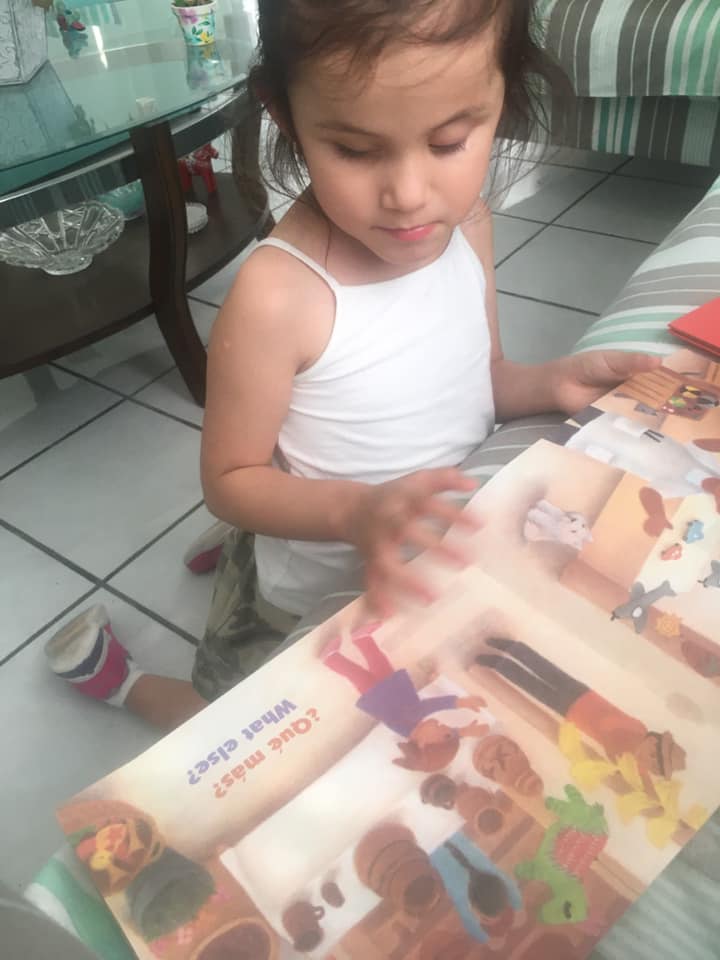
What Does Research Say About How We Learn a Second Language?
- We need a strong foundation in our first language.
- Language acquisition and speech development are not the same thing.
- Students develop English at a slower rate of verbalization. (Auditory comprehension comes before spoken language.)
- Immersion by itself is not the key, instead vocabulary development should be paired with first language instruction.
Things to Keep in Mind in Your Practice
- Not only is cultural competence important, but including families is vital!
- Develop a list of functional words in your area and translate them into student’s home language.
- Use real objects as much as you possibly can.
- Do not ask students to repeat words in English for you, as this is not beneficial. Instead ask them to explain to you what they understood. This will show you gaps you may need to re-teach.
- In rehabilitation settings using an interpreter is good, but not the best, especially if they are not aware of a positive philosophy on blindness or how certain things work. Try to find a native Spanish speaker that understands the blindness aspects.
- Do not use idioms, or use them and fully explain what they mean.
- Invite EL teacher to IEP meetings, and collaborate with them as much as possible.
Create a Communication Plan for Working with the Family
What is a communication plan? A communication plan sets up clear directions and information for reaching families and being able to communicate effectively. It is going to take more time, but will be worth it in the long run for both parties involved.
- Learn parent’s educational level. Just because something is translated does not mean it is readable.
- Parents will NOT pick up strange numbers, even if from school. Consider sending a basic text in Spanish using Google Translate. (Keep it simple and basic). Do this days prior to meetings and chats.
- Make sure all information being sent home is in their language.
Three Stages of Braille Instruction for English Language Learners
- Stage 1: Beginning Braille Instruction: Blended I-M-ABLE (by Diane P. Wormsley) with letter instruction (all guided by motivation)
- Teach vocabulary words that are important/meaningful/motivating to student. You need to learn words in student’s native language, all of this along with pre-braille skills like tracking.
- Start with the words, then letters, then dot locations.
- TVI should learn numbers one to six in student’s native language.
- Provide braille instruction that matches audio output.
- Encourage parents to read to student in home language.

- Stage 2: Teach rhymes and songs in English
- Use vocabulary words learned to make short rhymes.
- Teach letter sounds here that do not exist in home language. This takes some research. For example in Spanish “short” sounds of a, e, i, and u and with the consonants j, r, v, and z (very, jar).
- Make braille readily available to students even if they are not fluent yet. This includes grade level readings being done in general ed classroom and leveled books at their independent reading level.
- The example below shows the use of the letter “j” and rhyming sounds in the playful rhyme: “Look in the car, There is a head in a jar”. Use Rhyme Zone to find rhymes for any word and full rhyming phrases.
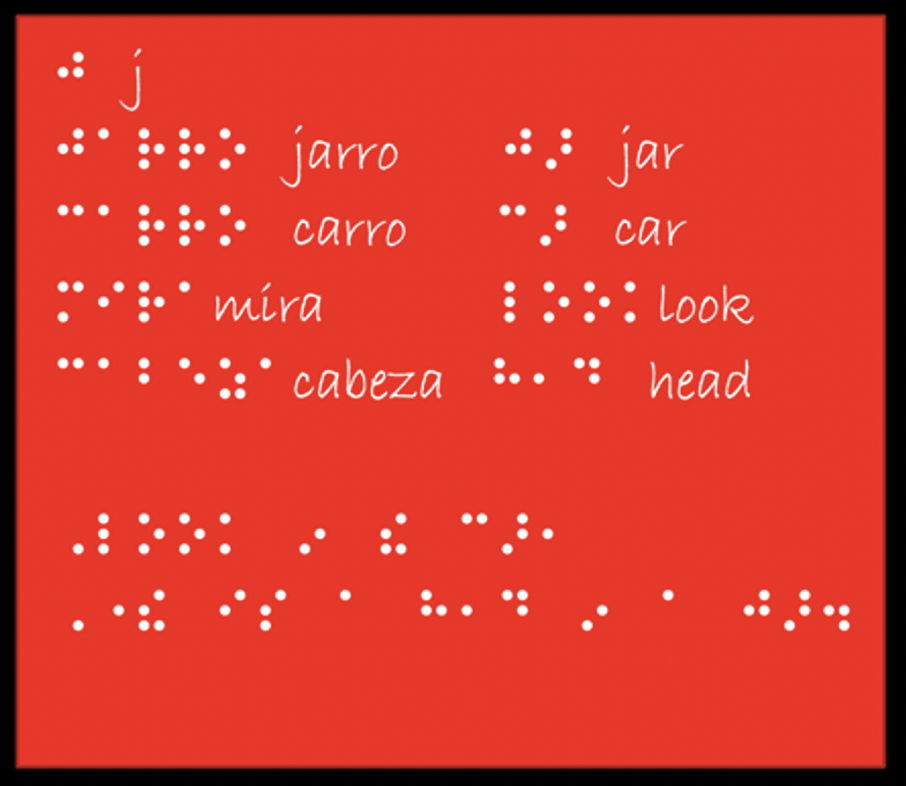
- Stage 3: Reading Fluency
- A student must read an hour a day to build fluency in braille.
- Vocabulary building is a vital part of this stage.
- Continue to do lessons from stages 1 and 2.
- Provide both educational required texts and fun leveled books.
- IEP goals should be written with this stage in mind, stages 1 and 2 can be objectives.
- Follow grade-level instructional reading passages
- Visit the Reading A-Z website.
- Gives a variety of leveled books so you can measure student growth.
- Vocabulary and comprehension questions come embedded in books $109 a year.
- Can get the ELL version that teaches social and academic language for $60/year.
- Newsela is fully accessible and has great texts.
Strategies to Use as a TVI
-
Use a child’s home language to support understanding of the second language, if possible.
-
Develop a list of functional words and translate into their home language.
-
Have student read books or listen to books in native language to gain comprehension, then move to text in English
-
Present real objects and experiences, not plastic models.
-
Give student time to observe and capture language before you make them speak. Asking them to repeat words in the beginning is not beneficial and can cause anxiety.
-
Whenever possible, teach children through hands-on, multisensory activities that will help them learn experientially, as well as linguistically.
-
Speak slowly and clearly. Also provide wait time.
-
Do not use idioms!
-
Use a “Total Physical Response” technique that involves having students touch the items they are learning the English language words for and modeling, even if they have good usable vision. This technique is used for sighted children.
-
Do your research on your student’s home language, culture and experiences and use that information to help them understand the relationships between new concepts that are being taught and their familiar experiences.
-
Rephrase rather than correct a student when they may have made a statement, word or phrase incorrectly.
-
Concentrate on the use of physical actions and three-dimensional models of objects when the real objects are not available.
-
Have student take notes on lessons taught that they can come back to (large print, on computer, in braille, into a recorder)
-
Periodically check a child’s notes and ask questions to verify concept comprehension, making sure that visual and auditory information is interpreted accurately.
Basic Guidelines
- Match listening activities to the student’s English proficiency level.
- Begin instruction with functional vocabulary that is needed for basic communication.
- Learn basic differences between students’ native language and English.
- Teach key phrases that will help the student solicit clarification like “Please repeat”.
- Develop lessons around environmental sounds.
- What sounds might be new to them?
- Teach key questions to help with verification.
- Teach math question concepts.
Best Practices
- Invite ELL teachers to IEP Meetings.
- Use the student’s home language as much as possible initially.
- Use a translation app.
- Work with the family to find out common wording at home (due to varying dialects).
- Collaborate with the Teacher of English Language Learners as much as possible.
Resources
- 10 Things a Teacher Can Do to Improve Instruction for ELL Students (Paths to Literacy Tip Sheet)
- Resources for Teaching English as a Second Language to Learners with Blindness or Visual Impairment (Paths to Literacy)
- Second Language Acquisition and Children with Visual and Hearing Impairments
- Do’s & Don’ts for Teaching English-Language Learners (Edutopia)
- Spanish/English IEP Terms (Developed by Maria Estela Esqueda for CETYS University – Mexicali Baja California)
- Resources for Teaching English Language Learners (TVI Portal Maryland)
